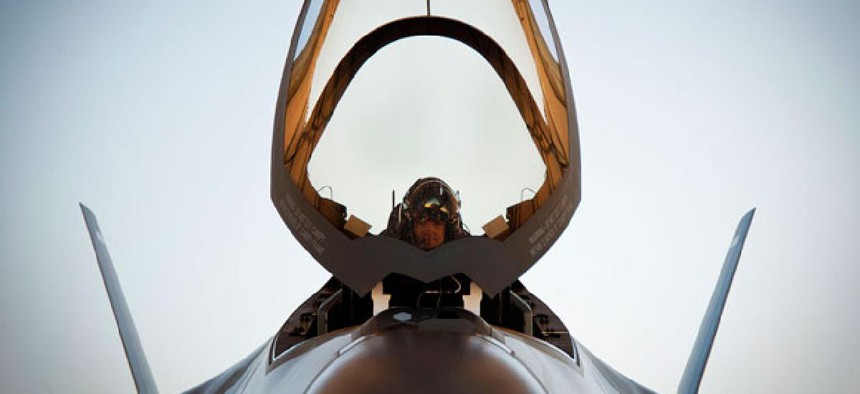Program Chief: Software Problems Could Delay F-35’s Delivery Beyond 2017

United States Air Force
The nearly $400 billion Joint Strike Fighter program has experienced multiple delays and cost overruns.
Air Force Lt. Gen. Christopher Bogdan, program executive officer for the $397 billion F-35 Joint Strike Fighter program, told Senate lawmakers yesterday he has concerns that software development challenges could further delay delivery of combat ready aircraft slated to complete final testing by 2019.
Contractor Lockheed Martin Corp. is developing the software in blocks, with the final version for combat-ready planes due in 2017, followed by a two-year period of initial operational tests and evaluation.
Bogdan told the Senate Armed Services Committee’s panel on tactical air and land forces yesterday that he is “moderately confident” that Lockheed will deliver Block 2B software, which manages weapons delivery, in 2015; and Block 3i software, the first version of software to be used in combat aircraft, in 2016. The first major block of software, which supports training flights, was completed in 2012.
But he is worried about the software that underpins the aircraft’s combat requirements: “I see more risk to the delivery of Block 3F, our full warfighting capability, by 2017.”
Bogdan said he would have a better picture of the situation after a critical design review and at least six months of flight tests are completed on the Block 2B software. Both the review and the tests are scheduled for early this summer.
The F-35 is one of the most software intensive projects in the Pentagon’s history, requiring 9.5 million lines of code. In January, J. Michael Gilmore, the Pentagon’s director of operational test and evaluation, submitted a report to Congress that said there has been virtually no progress in the development, integration and laboratory testing of software for production versions of the aircraft.
The F-35 program office has instituted what Bogdan called “robust” systems engineering and technical reviews of software development to determine if the system configuration under consideration is mature enough to proceed to the next phase.
“This, coupled with automated tools and processes, has resulted in an almost tenfold reduction in software release build time, and we have seen corresponding improvements in configuration management, test automation and error detection and resolution, Bogdan testified.
Despite these improvements, Bogdan said, “We still have challenges and the prime contractor and its subs still need to improve both the speed and quality of software development to be able to catch up from previous software delays.”
The F-35 is the most expensive weapons project in history and combat ready aircraft will not complete tests until 2019 -- 23 years after the Pentagon signed a contract with Lockheed Martin in 1996 to produce nearly 2,500 aircraft for the Air Force, Navy and Marine Corps.






